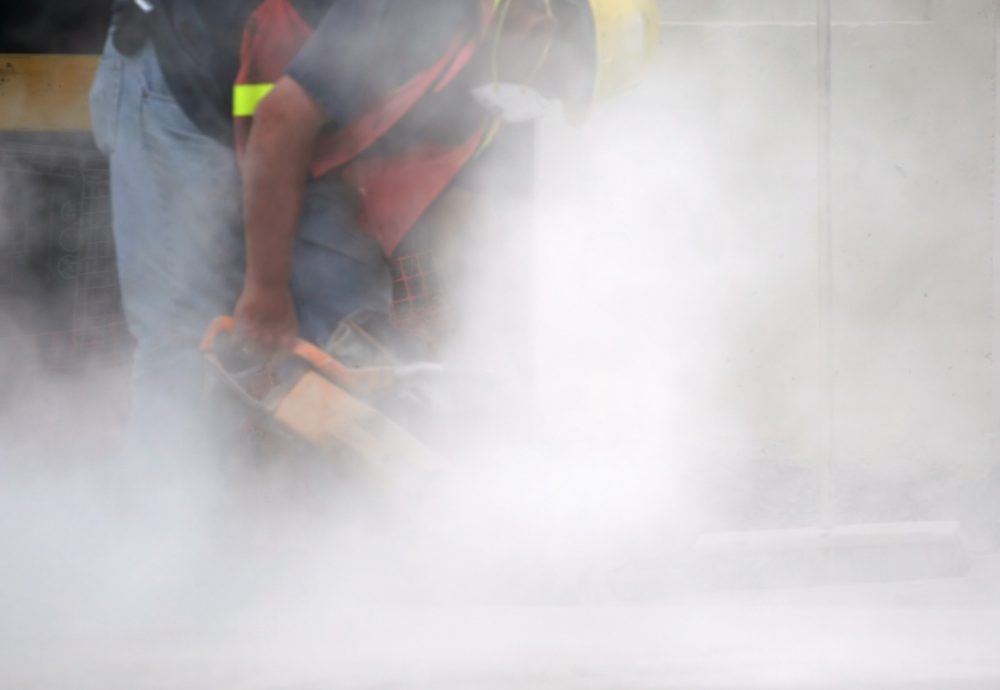TAKE CARE, BE AWARE : CONDUCTING RISK ASSESSMENTS FOR FREEZING TEMPERATURES
5 February 2019
The big chill has arrived in the UK with some regions seeing temperatures as low as -15’C. How are you planning to manage and protect your employees from the risk of slips, trips and falls in icy conditions?
With the winter months setting in, employers will see an increase in slips, trips and falls along with other major accidents due to the icy conditions. Whilst most employees will be aware of the dangers of working in icy conditions, it is important, as an employer, to ensure your teams are informed of the dangers and the steps to prevent and reduce the chances of accidents occurring.
Cold temperature-related accidents can put your employees’ health and safety at serious risk. Under the Health and Safety at Work Act (HASAWA) 1974, it is the employer’s legal responsibility to as far as ‘reasonably practicable’ assess the risks and implement standard operating procedures to reduce risks. The Management of Health and Safety at Work Regulations 1999 states that employers need to conduct risk assessments to safeguard employees in the workplace.
Employers can reduce the likelihood of slips, trips, falls and other health and safety risks by considering the following factors:
- Icy Conditions – de-icing pavements and high-traffic areas and provide high tread footwear as well as removing any debris, leaves, and foliage;
- Slippery Floors – use absorbent mats to soak up excess water on floors and ensure warning signs are clearly displayed;
- Low Temperatures – avoid ‘cold-stress’ related illnesses and exhaustion by providing appropriate waterproof workwear and encouraging regular breaks;
- Adverse Driving Conditions – avoid driving in adverse weather conditions. If your employees are office-based, consider alternatives such as working from home to avoid unnecessary risks.
Prevention Protection
According to the HSE, 80-90% of all accidents at work are preventable by employers implementing an effective health and safety management system and policy which should be consistently upheld throughout the lifetime of a project. Following the HSE’s Plan, Do, Check and Act model aids in delivering an effective and up to date health and safety policy to your employees by integrating your policy with the organisation’s operational procedures.
Risk Assessments
Conducting effective risk assessments will help you to protect your employees and your company. It is your legal obligation, as an employer, to ensure you conduct risk assessments. Below are 5 key steps to conducting your risk assessment:
- Identify the potential hazards
- Recognise who will be at risk from the hazards, your obligations to protect individuals may extend beyond just your employees to site visitors, members of the public etc.
- Evaluate and prioritise the main risks that you can control or minimise
- Record all your findings as useful information that will help to inform your action plan and implementation into your operational procedures.
- Review your risk assessments regularly or whenever major changes are happening or if similar accidents keep occurring.
Managing The Risks
Helping your employees manage their risks can be a combination of introducing new standard operating procedures and communicating with your employees about what they can do to manage risks in the workplace. As an employer, you can help to manage your employee’s risks by:
-
- High Visibility Clothing – Ensuring your employees wear high vis clothing during the dark winter months;
- Equipment – Providing all employees with appropriate PPE including boots with good grips and appropriate winter clothing;
- RPE – If your employees are using RPE, ensuring the equipment is not affected by colder temperatures;
- Training – Providing your team with Health and Safety Training to minimise the risks of injuries at work;
- Breaks – Promoting regular breaks to allow your employees to warm back up with a hot beverage;
- Communication – Giving your employees access to information relating to cold temperature-related risks can help prevent avoidable accidents at work and encourages your employees to take manage their own risks.
It is important to note that employees need to pay extra attention to regulations such as the Provision and Use of Work Equipment Regulations (PUWER) 1998 or the Control Of Substances Hazardous to Health (COSHH) 2002 to help manage their own risks at work.
Want to know more about Health and Safety Training and protecting your employees? Discover training services provided by Lucion Consulting, named the ‘Best Health And Safety Training Provider In The UK 2018’: Lucion Training
Positive Culture, Positive Employees
Following these key points and conducting good risk assessments will benefit your employees and your organisation. Ensuring your employees are protected, but also feel their safety and well being is being cared for, will result in a better working environment for employees and employers. Encourage a better work culture through better risk assessments and communication.
Be proactive and make sure your Safety Management System is effective for the benefit of both your employees and your company.
Further Reading
How Effective Is Your Risk Assessment: https://www.lucionservices.com/how-effective-is-your-risk-assessment/
Health And Safety At Work Act (HASAWA) 1974: https://www.legislation.gov.uk/ukpga/1974/37
The Management of Health and Safety at Work 1999: http://www.legislation.gov.uk/uksi/1999/3242/contents/made
Lucion Consulting Named The Best Health And Safety Provider In The UK: https://www.lucionservices.com/lucion-consulting-named-best-training-provider-in-the-uk/
ROSPA Working Safely – A Guide To PUWER: https://rospaworkplacesafety.com/2013/06/04/dummies-guide-to-puwer/
The Provision And Use Of Work Equipment Regulations (PUWER) 1998: http://www.hse.gov.uk/work-equipment-machinery/puwer.htm
Lucion Services COSHH Compliance Services: https://www.lucionservices.com/services/coshh-compliance/
HSE Control Of Substances Hazardous to Health (COSHH) 2002: http://www.hse.gov.uk/coshh/
HSE Plan, Do, Check and Act: http://www.hse.gov.uk/managing/plan-do-check-act.htm
Health And Safety Training Course – Lucion Consulting: https://www.lucionservices.com/training-course-categories/health-and-safety/
HSE A Brief Guide To Risk Assessments: http://www.hse.gov.uk/pubns/indg163.pdf
Safety Management System – Lucion Services: https://www.lucionservices.com/services/safety-management-systems/
Risk Assessment Checklist
Make sure your Risk Assessment covers all the bases with this quick 6 step Risk Assessment checklist.
.png)
Download From NexGen
Health and Safety Policy Template
Get organised and allocate responsibilities to certain team members using this easy to use Health and Safety Policy template provided by our health and safety consultants at Lucion Consulting.
_1.png)
Download From NexGen
Method Statement Template
A method statement is a description of how the work will be carried out safely, in a logical sequence exactly how a job is to be carried out in a safe manner and without risks to health. Use of Method Statement template to help write your method statement.
_1.png)
Download From NexGen


 NexGen
NexGen












